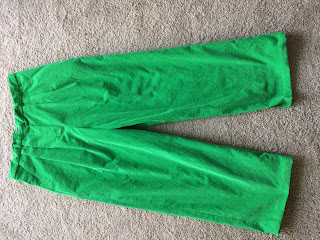It seems as though people
are judging others more and more by their political positions—their stand on
particular issues or even specific bits of legislation. While this is certainly
one point of reference, it might be more useful to look at how they treat
others, both in person and in writing.
What initially got me
thinking about this was an article in TheAtlantic (December 2017) tracing the personal history of a major neo-Nazi. The
article included a discussion of what this man was like in high school. Some of
it is perhaps not surprising—problems with drugs and destructive (and
self-destructive) behavior. The surprising part was that his political
positions seem to have been quite different.
“He often wore a hoodie
with a large F[***] RACISM patch on the back…. [He] set up his own website, for
a fake record label… that he used to dupe bands into sending him demo tapes.
Here, his leftist leanings were on full display: He wrote posts encouraging
people to send the Westboro Baptist Church death threats from untraceable
accounts, and he mocked the Ku Klux Klan and other racist organizations.”
(p.59)
The article doesn’t say
whether he did anything of a productive nature toward reducing racism and
homophobia—I’m inclined to doubt it. It sounds like his way of responding was
to hurl threats at and mock the opposition.What interested me was that while
his targets have flipped 180 degrees since high school, his way of treating them
remains unpleasantly the same.
It seems to me that there
has been an increase in the amount of public name-calling and general nastiness
all around. One of the things we’re taught as we grow up is not to blurt out
everything we think. Words can hurt. Treating others with respect requires that
we consider the effect of our words before we speak.
Of course, there are some
people who just don’t care whether they hurt others, and some people who
positively enjoy upsetting people and making them angry (or frightened.) That says enough about their character right
there. The neo-Nazi in the article seems to be one of those.
But I would hope there
hasn’t been a sudden increase in the number of people like that. I’m hoping
that what is happening is that people are getting careless, writing messages
and posts and comments and so forth while in the grip of white-hot rage, and sending
them off into the world without taking a moment to calm down, reread what they’ve written, and consider the likely
effect on their words. Calling names will not change anyone’s mind. It can,
however, lose you a lot of sympathy.
Could that be what’s happening?
I started writing this, thinking that people can change their views on issues
and even sometimes their prejudices (in both directions, apparently), but that maybe
how they treat other people doesn’t change very much. It would be interesting to find some data on
this. But now I’m hoping that people can change how careful they are with words. Hopefully for the better.
Till next post.





